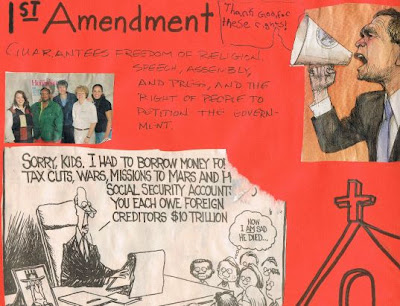With school right around the corner, it's time for teachers to begin gathering lesson plans and other materials for the classroom. Fortunately, there are lots of different sites around the web that can help. Here are 25 places that offer free printables, worksheets, and lesson plans.
Thinkfinity - This website from the Verizon Foundation offers free lesson plans in addition to a lesson plan search engine that pulls results from all over the web.
PBS Teachers - PBS Teachers is a great website for educators who need lesson plans, curriculum ideas, and materials for classroom activities.
The Apple - The Apple is a social network for teachers. The site provides an excellent lesson plan section where teachers can search for lesson plans or submit a lesson online.
We the Teachers - This online community for teachers provides a lesson plan search engine and a place for teachers to meet and share classroom activities and curriculum ideas online.
TeachersRecess - The File Cabinet at TeachersRecess is another great site for teachers to find and share lesson plans and worksheets.
Tapped In - The online education community is a place for teachers to collaborate and share lesson plans.
HotChalk - HotChalk has a wide range of free resources for teachers. One particularly valuable resource is the Lesson Plans Page which host more than 3,000 free lesson plans for K-12 educators.
Teacher Focus - This site's Lesson Plan Library provides lesson plans for a wide range of subjects, including art, music, health, P.E., science, math, language arts, and literature.
The New York Times Daily Lesson Plan - This NYT website features a daily lesson plan to help engage students in the news.
Lesson Plan Central - Lesson Plan Central provides thousands of free worksheets, printables, and lesson plans for teachers. Other resources include classroom clip art, PowerPoint templates, and web quests.
The Lesson Plan Library - Discovery Education's Lesson Plan Library offers free lesson plans for K-12 teachers. Most plans are designed to accompany Discovery VHS and DVD titles.
TeAchnology - This free online teacher resource is one of the most comprehensive on the web. The site offers over 30,000 free lesson plans in addition to 7,000+ free printable worksheets.
Read Write Think - This NCTE website offers free standards-based lesson plans and classroom activities for K-12 teachers.
Math Fact Cafe - Math teachers will love this site which offers free math worksheets for elementary students.
English Banana - The English Banana offers hundreds of free printable worksheets for English teachers. The site also provides resources for drama teachers.
VH1 Music Studio Lesson Plans - VH1 Music Studio provides dozens of free lesson plans for music teachers.
Crayola Lesson Plans - Crayola provides hundreds of standards-based lesson plans and lesson plan ideas for K-12 teachers. Subject areas include language arts, social studies, science, math, and visual arts.
School Express - This education site offers more than 15,000 free printables and worksheets for the classroom. School Express also provides quiz makers, puzzle makers, and other helpful tools.
abcteach - Although abcteach does offer special materials to paid members, the site also provides thousands or worksheets that can be downloaded and printed for free.
Kids.gov - This free government website is a good place to find lesson plans, classroom activities, and other teaching aids for a wide range of subjects.
Tlsbooks.com - Tlsbooks.com provides free printable worksheets for home and school use. Most of the worksheets are designed for K-5 teachers, but there are also worksheets available for preschool educators.
SoftSchools.com - This online resource offers printable math, phonics, and grammar worksheets for elementary and middle school teachers.
Awesome Library - The Awesome Library hosts nearly 40,000 free (and reviewed) education resources for teachers of every subject.
Family Education - This site has a Printables Center with thousands of free educational printables and activities for students of all ages.
Guest post from education writer Karen Schweitzer. Karen is the About.com Guide to Business School. She also writes for OnlineDegreePrograms.org
.


